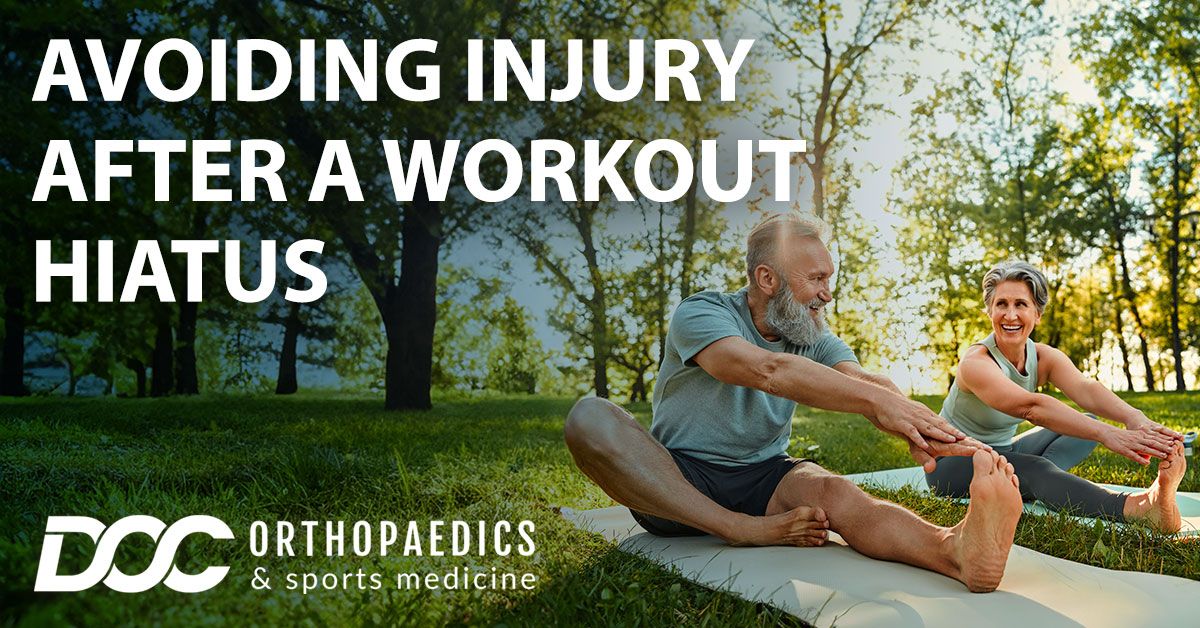
Heading back to the gym? Do it safely.
Heading back to the gym? Do it safely.
Whether you’ve been away from the gym because of injury, scheduling or just the demands of life, it’s important to get back in the swing of things slowly and safely. Depending on how long you’ve been away from regular workouts – and why – you’ll want to reestablish your routine in a way that maximizes your results without increasing your chances of injury.
Oftentimes, an eagerness to get back to it leads people to lift weights that are too heavy or attempt cardio exercises they can’t keep up with. This can lead to injuries as the body is deconditioned after a long sedentary period. It takes time to rebuild strength and stamina. Keep reading for tips on how to safely and gradually get into a consistent training routine.
Here are a few DOs and DON’Ts as you head back to the gym:
DO focus on form. Moving with good form helps your body work as a unit. Moving slowly and intentionally through exercises reduces risk of injury and maximizes your stability and mobility. If you’re not sure about your form, consider working with a personal trainer to get you started.
DON’T push yourself too hard in the beginning. Start with short and light exercises, increasing the time and intensity in manageable increments when you feel ready. Start with 20 to 30 minutes of light exercise, even if you worked out longer and harder before your break. Slowly increase the time and intensity over a period of several weeks to allow your body time to adjust to being back in the gym.
DO mix it up. Alternate strength training and cardio for a cross-functional exercise routine. This allows certain muscle groups to rest while others are exercised. In addition to limiting overuse or straining injuries, a blend of target movements and cardio will build your endurance. You can even include different cardiovascular activities for variety, including running, walking, swimming, tennis, or anything else that keeps you active and engaged.
DON’T ignore your core. The abdominis muscles, internal and external obliques, and pelvic floor muscles are the key to maintaining the stability of your spine and pelvis. A strong core removes stress and tension from our back, increasing range of motion and balance and decreasing your chances of injury.
DO remember to stretch. Stretching helps to warm up and loosen your muscles before your workout, putting less strain on the body when you lift or run. As little as 10-15 minutes stretching the main joints of the body prior to exercise can greatly reduce your risk of injury.
DON’T skip your post-workout cooldown. Stretching at the end of your workout is just as important as the beginning. Mixing stretches and breathing exercises post-workout can help regulate your breathing, relax your body, and reduce stresses on your heart and joints.
DO know your limits. Minor muscle aches or soreness after practice or a workout are to be expected in most cases, and normal aches and pains typically dissipate within 24-48 hours. If you notice pain continues after a few days – or if it becomes persistent during an activity – you should consider taking a day off to rest and recover. You may also want to see a medical professional if pain continues.
DO know where to go for the best orthopaedic care
If you’re returning to the gym after an injury – or if you’ve been away for more than a few months – you may want to talk to your doctor first to ensure a safe return. Since 1972, the specialists at DOC Orthopaedics and Sports Medicine have been committed to providing exceptional orthopaedic care through innovative techniques, quality services, patient communication, and education. With specialties ranging from general orthopaedics and physical therapy to sports medicine, joint replacement and more, the doctors at DOC Orthopaedics and Sports Medicine can provide local expert care for any orthopaedic disorder or injury and help you get back in motion. Click here to make an appointment today.

